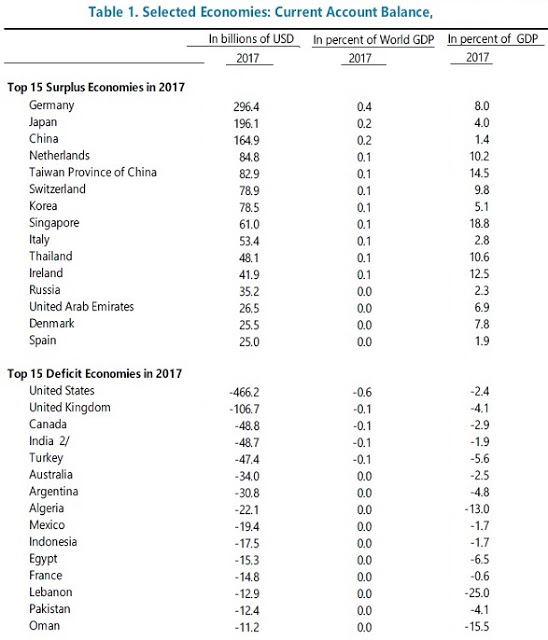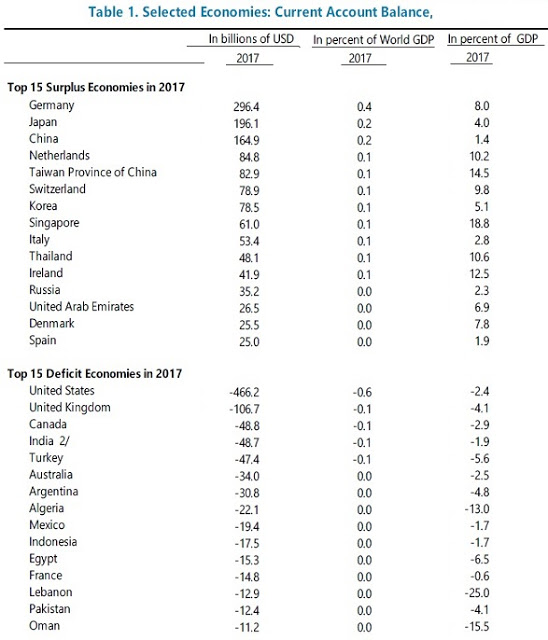I’m the sort of joyless and soul-killing conversationalist who likes to use facts as the background for arguments. In that spirit, here’s an overview of some facts about global trade balances, taken from the IMF External Sector Report: Tackling Global Imbalances and Rising Trade Tensions (July 2018).
Here’s a list of the 15 countries with the largest trade surpluses and deficits, as measured by the current account balance. It also shows these magnitudes as a share of world GDP and a share of the country’s GDP (for the record, I’ve edited the table by cutting out the columns for 2014-2016).

A few facts jump out at me:
1) The US has the largest trade deficit in the world in absolute terms. However, trade deficits are larger as a share of the national economy in a number of other countries, including the UK, Canada, Turkey, Argentina, Algeria, Egypt, Lebanon, Pakistan, and Oman.
2) Germany has by far the largest trade surplus in the world in absolute terms. Indeed, the trade surplus for the euro-area as a whole (not shown in the table) is $442 billion–very similar in size to the US trade deficit.
3) China, which seems to be arch-enemy #1 for trade at present , is third-highest in absolute size of trade surplus, well behind Germany and Japan. Measured as a share of national GDP, China’s trade surplus is actually the smallest of the top 15 trade surplus countries listed here.
4) If you subscribe to the economically illiterate view that trade surpluses are a measure of a nefarious ability to trade unfairly and exploit the rest of the world, while trade deficits are a sign of victimization by the beliefs of naive and overly trusting free trade fanatics, you need to match those beliefs to the national patterns shown here. That is, you need to believe that the 15 countries at the top are unfairly hustling the rest of the world economy, while the 15 at the bottom are paying the price.
5) The IMF report also emphasizes that there was a major shift in the configuration of global trade balances back around 2013, which has continued since then: trade surpluses and deficits are more concentrated in advanced economies, and less in the rest of the world economy.













Leave A Comment